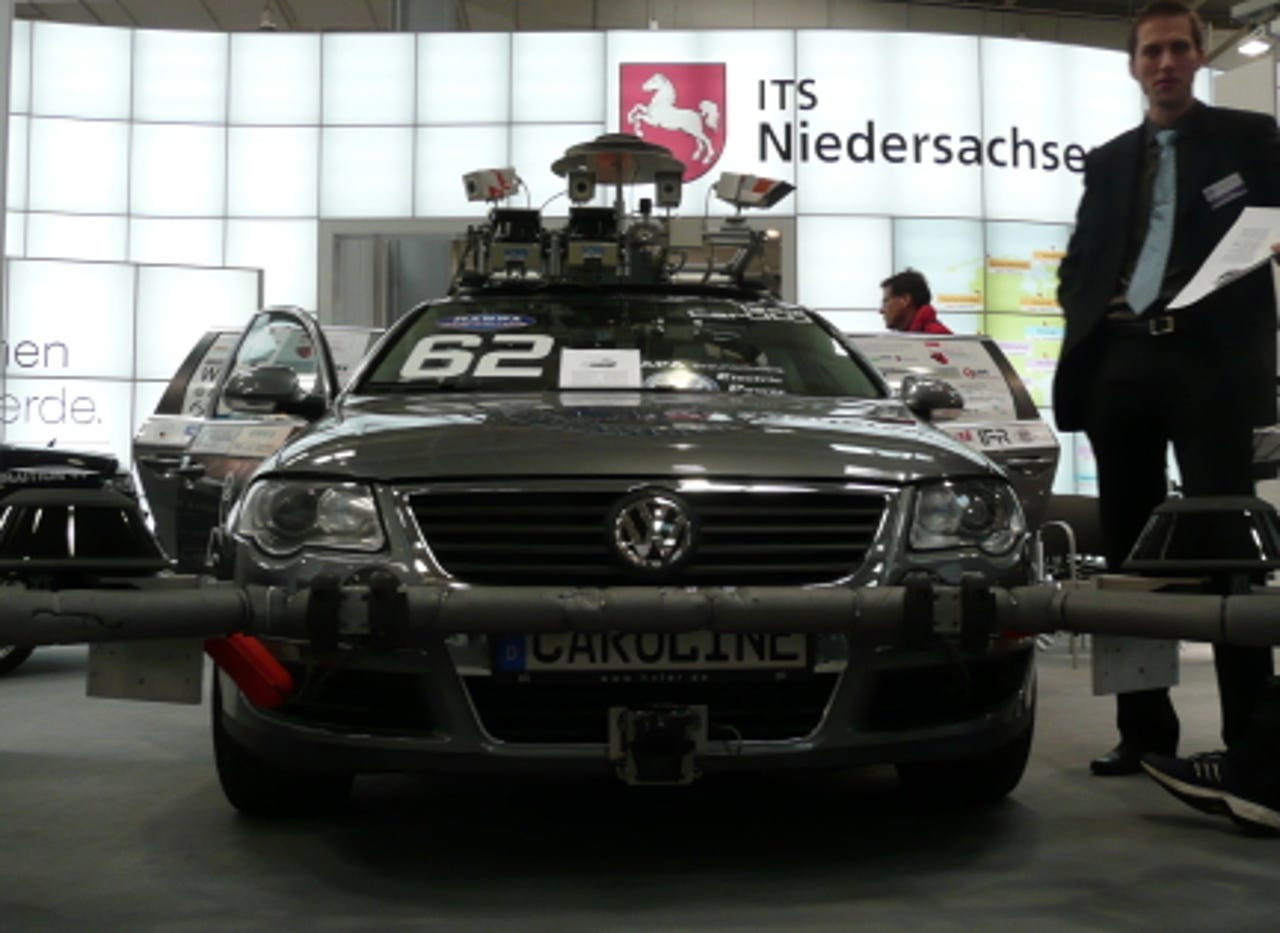The Linux car that drives itself


Caroline is a 2006 Volkswagen Passat, converted by a team from the Braunschweig University of Technology to be an autonomous vehicle.
The car was a finalist in the legendary Darpa Grand Challenge, a US Defence Department-sponsored competition held every year or two in which driverless vehicles battle it out to see which can complete a set course in the fastest time. The cars must drive themselves — they cannot be steered by remote control.
Although Caroline came seventh out of the 11 finalists, it must be said that it did not successfully complete the course.
At the front of the car is an array of cameras, which are mainly there to locate lane markings. In the middle of the roof is a large GPS unit.
Caroline's boot contains a variety of electronics for running the car. At the bottom left is the main control unit, essentially a switch box for all the car's main components. To its right is the power supply unit for the computers.
In the middle is the communications control unit, and the black box at the top right is the CPU that processes what is seen by the cameras at the front of the car.
However, the bulk of the processing is performed by the six Debian Linux-powered CPUs that can be seen at the rear of the picture. The two left-most computers are the DAQ (data acquisition) units, which combine information from laser scanners at the front and back of the car to establish which objects are static and which dynamic. The top middle unit is the "watchdog": it monitors the other components. Below it is the control unit for the car's functions. At the top right is the mapping unit, and below that is the artificial intelligence unit: the decision-maker.
This is one of the big red buttons that can be used to stop the car if its computers fail, although pressing it would clearly present a challenge in itself, were the car out of control. Another such button can be found on the other side of the car, and a third is in the footwell of the "driver" seat.